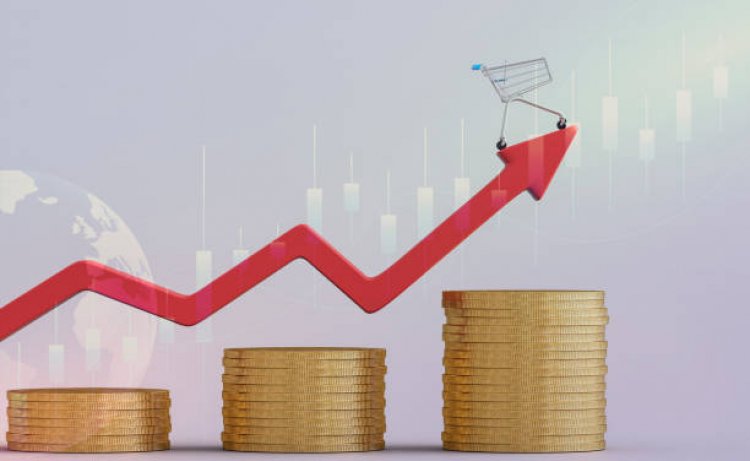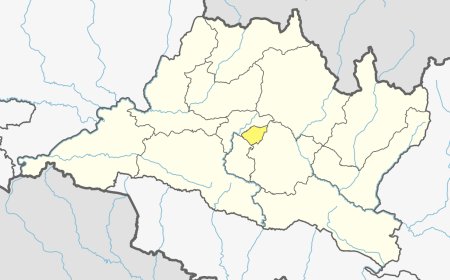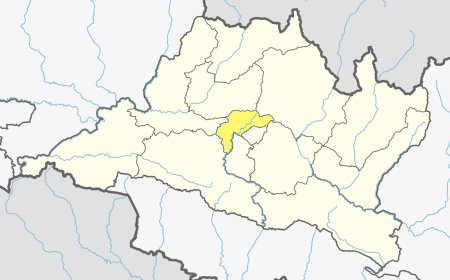Exploring the Factors Behind High Inflation in Nepal
This article explores the various factors contributing to the high inflation rate in Nepal, including rising fuel prices, the Russia-Ukraine war, currency depreciation, a liquidity crunch, and fertilizer shortages.

Nepal, a small Himalayan country, has had high inflation rates in recent years. Inflation is a measure of the rate at which an economy's prices for goods and services rise over time. High inflation rates reduce the purchasing power of money, raising living costs and impacting businesses and the overall economy.
This article will look at the factors behind Nepal's high inflation, including rising fuel prices, the Russia-Ukraine war, the depreciation of the Nepali rupee, liquidity crunch, and the fertilizer shortage.
Rising Fuel Prices
Since the emergence of COVID-19, fuel prices in Nepal and around the world have skyrocketed. Since the beginning of 2022, the costs of petrol, diesel, and LPG in Nepal have risen by 43%, 57%, and 14%, respectively. As a result, transportation costs have risen rapidly, subsequently increasing the cost of industrial production, food products, and other essential items to all-time highs. This has led to an increase in the cost of living for the Nepali people.
Russia-Ukraine War
The global consequences of the Russia-Ukraine conflict have had an impact on Nepal, adding new challenges to the country's already struggling economy. Energy, food, and commodity prices have increased as a direct result of the conflict disruption of exports of crude oil, natural gas, cereals, fertilizer, and metals. The Russian Federation and Ukraine are major exporters of agricultural products, contributing 25% of the global wheat exports, 16% of global corn exports, and 56% of global sunflower oil exports.
The depreciation of Nepali Rupee
The value of the US dollar in Nepal reached an all-time high, with the USD selling at NPR 130.68 as of May 06, 2023. The Indian rupee, to which the Nepali rupees are pegged to, has also decreased drastically since the conflict between Russia and Ukraine. As a result, Nepali importers, who are currently paying high rates for importing goods due to the rising value of the USD, may have to pay even higher prices if the dollar continues to rise. Given that Nepal imports the majority of its necessities, including food, medicine, and fuel – the strengthening of the USD would not only result in a wider Balance of Payment but would also further raise the cost of goods.
Liquidity Crunch
Since the economy in Nepal began to grow after the lockdowns caused by COVID-19 were eased, the liquidity crisis became worse. The commercial banks in Nepal have been facing issues in keeping the credit-deposit (CD) ratio below 90% due to the delayed deposit collections. Officials from the NRB claim that the CD ratio at a few banks is still close to 95%. In attempts to attract deposits, banks have been increasing their interest rates. Increased interest rates translate into higher borrowing costs. This raises the cost of manufacturing for domestic industries, which, in turn, drives up the market price of the goods they supply.
Fertilizer Shortage
Every year, around the time of the rice sowing period, Nepal experiences a scarcity of urea fertilizers. Over 90% of the farmers, according to the National Federation of Farmers, were unable to obtain any fertilizer. According to the Ministry of Agriculture and Livestock Development, around 600,000 tons of fertilizer are needed annually in Nepal. According to official data from the Government of Nepal, the cost of fertilizer has increased four to five times in the past year. The government allocated NPR 15 billion for the import of chemical fertilizer, but the amount would only be enough to purchase about 200,000 tons at the present pricing. The harvest for the season could decline further due to a severe fertilizer deficit during the busiest harvesting period, reducing revenues and heightening concerns about food scarcity and rising inflation.
To summarize, the current inflation in Nepal is driven by various factors, including the rising fuel prices, Russia-Ukraine war, depreciation of NPR, liquidity crunch, and fertilizer shortage. All of these factors have contributed to an increase in the cost of goods and services, making life more challenging for Nepalese citizens. To tackle inflation, the government of Nepal needs to implement effective policies that address the root causes of inflation while also protecting the interests of the country's most vulnerable populations. In the long term, investments in agriculture, infrastructure, and renewable energy can help to stabilize the economy and promote sustainable growth.
What's Your Reaction?




































































































